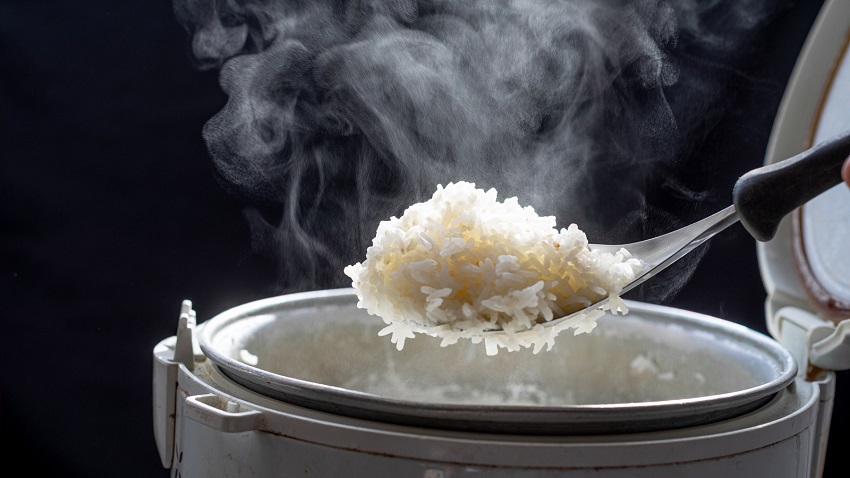Rice cooker is a common household product and many people often get fascinated by how does a rice cooker work. Well, it’s not a simple but understandable process.
For more than 8000 years rice are the main staple cuisine in south Asia and north-east Asia. However, the problem is cooking it. And that’s where a rice cooker comes in handy. So, back in the 50s rice cooker was invented by Toshiba. This automated electric machine is built to cook rice.
Every year, over one hundred million pounds of rice are consumed in America alone. Everyone who loves rice needs a rice cooker machine and it can suit almost every individual. Also, it’s an ideal appliance for every household. There are various types of rice cookers with unique features and functions available. Read on this article to explore how does a rice cooker work.
A Rice Cooker Structure
At first, know the structure of a cooker before getting into the working process. There are a few bit differences in every rice cooker from one another. However, every basic rice cooker has 4 main elements:
- Main body
- Heating Plate (Electric)
- Cooking Pan
- A Device Thermal-Sensing made
The Working Process
The Rice cooker works in 4 phases: boiling, sitting, resting, and absorbing. Below here are explained these phases.
Sitting
When the pot is loaded with water and rice – the weight of the pot press down the main body bottom’s thermal sensing device. And while the power button is on the pan conduct heat from the heating plate.
Boiling
In this phase, the used water gets boiled. Moreover, the time of boiling depends on the amount of both water and rice or any other material in the inner bowl. A basic rice cooker takes fifteen minutes for white rice (1 cup). However, a 1:2 ratio of rice and water is ideal for any rice cooker device.
Absorbing
After boiling the rice cooker starts steaming. Then, the grain absorbs the remaining water. And the temperature of the inner pot starts rising again, once all boiling water is finished.
Here, the rice cooker mechanism gets tricky. A standard rice cooker has a small button and this button is within the spring-loaded heating component. Also, at its bottom is a powerful small magnet that is permanently situated.
When the button is pressed down – it contacts the magnetic part and stays within that force. Similarly, the rice cooker gets in full power mood when the outer switch is pressed down for cooking mood.
After reaching the heat temperature the magnetic attraction of the button is disconnected that allows warming mode. Usually, it takes 15 to 20 minutes.
Resting
This last phase keeps the rice warm. In a standard cooking device, there is a power cord that passes through its resistor. And, it works on limiting the current to keep a warming and low temperature in the inner pot.
Conclusion
Rice is an ideal meal and if eat it often, you will need a rice cooker device. Moreover, you can use it for cooking risotto, oatmeal, etc. Also, this device switches off automatically when the cooking is finished and easy to clean. We hope that the working process of a rice cooker is now understood by you.



